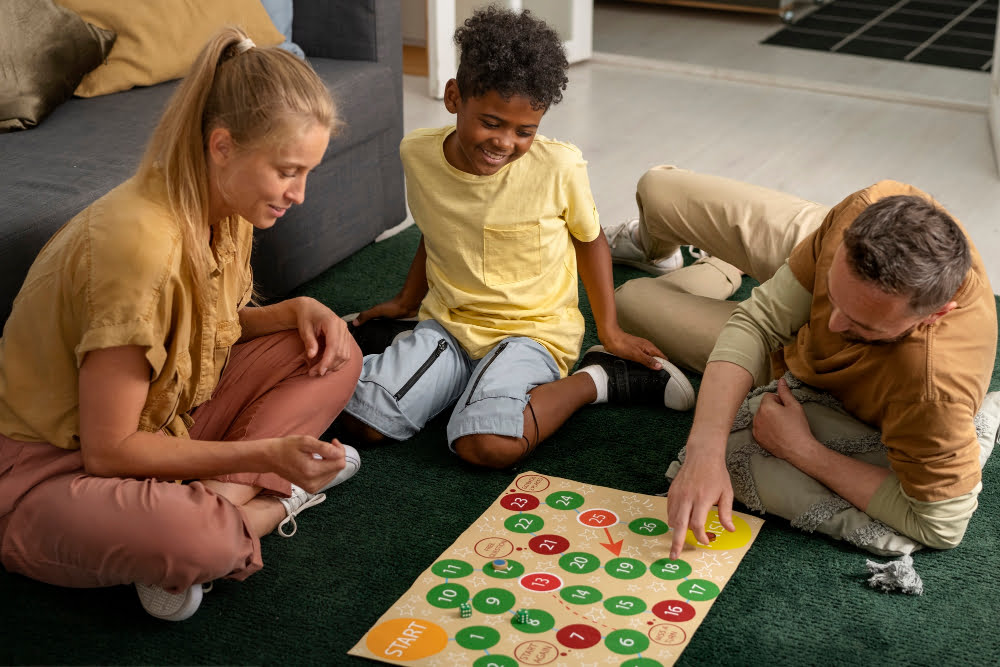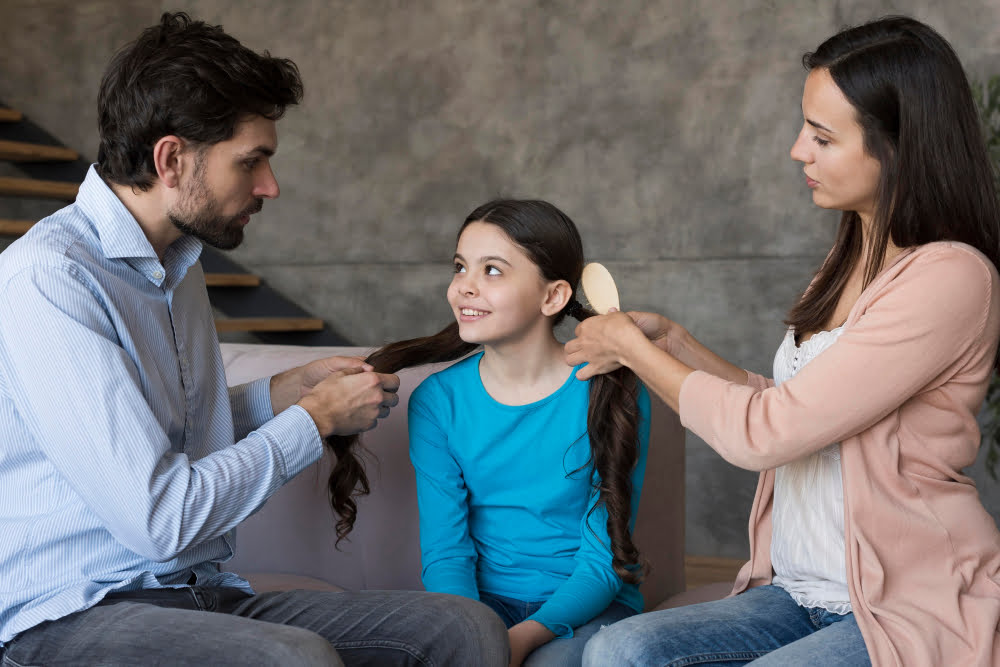Exploring the diverse parenting styles portrayed in popular cartoons can provide unique insights and lessons for real-life parents.
Diving into the world of cartoons can offer surprising insights into different parenting styles. These animated series, from the evergreen Simpsons to the quirky Bob’s Burgers, showcase a variety of approaches to raising children, providing a unique, humorous, and often exaggerated perspective on parenting.
This article will explore these diverse cartoon parenting styles, highlighting their characteristics, strengths, and weaknesses, and how they relate to real-world parenting techniques. Whether you’re curious about Marge Simpson’s nurturing approach or Bob Belcher’s laid-back style, this comprehensive analysis will satisfy your curiosity and might even offer some unexpected parenting tips!
Key takeaways:
- Early 20th-century cartoons showcased traditional and authoritarian parenting styles.
- Classic cartoons portrayed fathers as clueless yet loving figures.
- Recent children’s shows depict mothers as diverse and relatable characters.
- Modern animated series explore a range of parenting styles and their impact.
- Animated parents can shape children’s behavior and perceptions of parenting.
Here You Will Learn:
Depiction of Parenting in Early 20th Century Cartoons

In the early 1900s, cartoons illustrated a rather traditional family setup, often characterized by strict discipline and authoritative parenting. The clear division of roles was common, with fathers typically acting as the enforcers and mothers as caregivers. Shows like “Popeye” and “Tom and Jerry” subtly highlighted these aspects.
The characters exhibited obedience to authority, a reflection of societal expectations of the time.
However, the simplicity of these shows belied their poignant presentation of life lessons. Popeye, for instance, often played the role of a protector, teaching kids about bravery and the importance of standing up to bullying. Although the parenting styles depicted might seem quite rigid by today’s standards, they also emphasized virtues such as respect, courage, and resilience.
Thus, these early cartoons provide a glimpse into the historical evolution of parenting and offer a valuable lens through which to view our current practices and philosophies.
Portrayal of Fathers in Classic Cartoons

Classic cartoons such as “The Flintstones” present fathers like Fred Flintstone as the so-called ‘man of the house’ who provides for the family but can be a little clueless when it comes to familial nuances. This is often balanced by a wiser, more patient spouse.
Simultaneously, in “The Jetsons,” George Jetson reflects an evolved version of the archetypal animated dad. Despite being set in a futuristic world, he still battles everyday parenting issues, demonstrating a more involved father figure yet holding onto some befuddled characteristics.
Interestingly, the ever-beloved “Goofy,” even enshrined in Disney lore, showcases a single dad struggling and often hilariously failing to provide guidance to his son, offering a heartwarming depiction of fatherly love and dedication.
These portrayals have gradually shifted societal perception of fatherhood over time, emphasizing the need for active paternal involvement rather than merely being the breadwinner. Yet, they all share an endearing vulnerability that allows for comedic moments while imparting valuable lessons about parenting.
Representations of Mothers in Recent Children’s Shows

A notable shift can be observed in the portrayal of mothers in the landscape of recent children’s shows. This trend has moved away from the clichéd ‘perfect mother’ stereotypes, towards a more nuanced representation encompassing a range of personas – from strong leaders to nurturing caregivers, and even flawed but learning individuals.
Take Linda Belcher from “Bob’s Burgers,” for instance. Her unwavering enthusiasm and support for her children’s endeavors, however eccentric they may be, paint a picture of modern, understanding motherhood. She represents a kind of optimistic resilience which many contemporary parents find inspiring.
Another striking example is Nicole Watterson from “The Amazing World of Gumball”. Her character, a working mom, balances her professional aspirations with the demands of raising a family – showcasing the realities of the modern-day ‘supermom’. Yet, her portrayal doesn’t shy away from featuring her shortcomings, thus making her a relatable figure for many audience members.
These and other similar representation seeks to reflect the complexity and diversity of motherhood in the real world, helping children to form a well-rounded understanding of the multiple roles a mother can play.
Dissecting the Parenting Styles in Modern Animated Series

Animated series of the 21st century paint a broad canvas of parenting. Representations run the gamut from the unconventional Belchers of “Bob’s Burgers” to the more traditional parents of “Peppa Pig”. Bob and Linda Belcher’s laid-back and supportive style provides an ideal backdrop to examine relaxed parenting. They embrace their children’s peculiarities, fostering an environment of acceptance and individualism.
On the other end of the spectrum, we find typical nuclear families, exemplified by Mommy and Daddy Pig. Enforcing decorum, emphasizing learning, and nurturing harmonious family life, they exemplify authoritative parenting, balancing strict rules with warmth and responsiveness.
Each animated series uniquely explores the impact of these contrasting styles on child development, offering valuable insights into the benefits and drawbacks inherent in each approach. Balancing love and discipline, understanding individualism, and the importance of maintaining structure and routine are key lessons drawn from these popular cartoons.
Comparing Parent-Child Relationships Between Different Animation Genres

Animation genres largely influence the portrayal of parent-child dynamics. For instance, in classic 2D animation like ‘The Jetsons’ or ‘The Flintstones’, stern yet loving parents are prevalent figures. They offer a mixture of guidance and discipline while also allowing room for light-hearted fun, reflecting the post-war family model of the mid-20th century.
Contrastingly, contemporary 3D animated series such as ‘Peppa Pig’ or ‘Paw Patrol’ tend to emphasize friendly, almost peer-like parental relationships, mirroring the rise of democratic parenting. These shows often highlight cooperation, problem solving, and emotional understanding as key themes.
Anime, with its broad and complex narratives, often portrays hopeful and resilient children dealing with absent or indifferent parents. An example can be seen in ‘Naruto’, where the hero gets his strength from enduring the isolation that comes from being parentless.
In essence, the genre of animation, shaped by cultural and societal norms of their times, greatly impacts the nature of the depicted parent-child relationship. It subtly directs viewers towards ways parents and children can interact, react, and learn from each other.
The Influence of Animated Parents On Children’s Behavior

Animated parents often serve as unintended role models for children. Research has shown that children can internalize behaviors and ideologies presented in cartoons. Impressionable by nature, they might emulate the traits they see in their favorite animated characters, further extending to the behaviors displayed by the characters’ cartoon parents.
For example, consider the loving but firm discipline of Mufasa in “The Lion King”. Mufasa’s approach to parenting, filled with love and guidance, can significantly impact a child’s perception of a parent’s role and authority. Likewise, the emotional vulnerability showcased by characters like Greg Universe from “Steven Universe” can encourage children to grow comfortable and open with expressing emotions, aiding their emotional growth.
However, the influence of cartoon parents isn’t always positive. Exposure to unreasonably authoritarian or negligent animated parents can also shape children’s expectations and acceptance of such behaviors in real life. This potential for reinforcing negative parenting norms underlines the critical need for responsible portrayal of parenting styles in animations.
Hence, while animated shows can be a popular source of entertainment, they should not be underestimated as influential tools in shaping children’s perceptions about parenting and behavioral norms.
The Impact of Cartoon Parents On Real Life Parenting

Research has shown that media, including cartoons, have a significant influence on children’s behaviors, attitudes, and perceptions. With cartoons often depicting exaggerated parenting practices, kids may internalize these portrayals, forming their own expectations of familial dynamics.
While some animated parents might show love, empathy, and resilience, others exhibit inconsistency, negligence, or overprotectiveness. Children, being highly impressionable, may identify these patterns as normal or acceptable. Consequently, they may emulate the positive aspects in their own behavior and relationships while being more understanding of the negative ones.
It’s important that parents monitor such content, engage in discussions about these depictions, and use these fictional circumstances as teachable moments for their children.
FAQ
What are the 4 styles parenting?
The four main parenting styles are permissive, authoritative, neglectful, and authoritarian, as based on the work of developmental psychologist Diana Baumrind, and Stanford researchers Eleanor Maccoby and John Martin.
What TV show is types of parenting styles?
The TV show that explores different parenting styles is called “Nanny on Tour”.
What is the best child parenting style?
The best child parenting style is authoritative parenting due to its balance of offering guidance and providing support, nurturing, and enforcing limits and standards.
How does parenting style influence a child’s temperament and behavior?
Parenting style significantly influences a child’s temperament and behavior by shaping their responses, attitudes, and coping mechanisms towards societal expectations and interactions.
Can watching certain cartoons improve understanding of parenting roles?
Yes, watching certain cartoons can improve understanding of parenting roles as they often portray diverse family dynamics and highlight various aspects of parenting.
What are some common mistakes made by parents illustrated in cartoons?
Many cartoons often depict common parenting mistakes like neglecting to establish clear and consistent rules, failing to engage in open communication, overlooking the importance of individuality, or not portraying real-life consequences for actions.